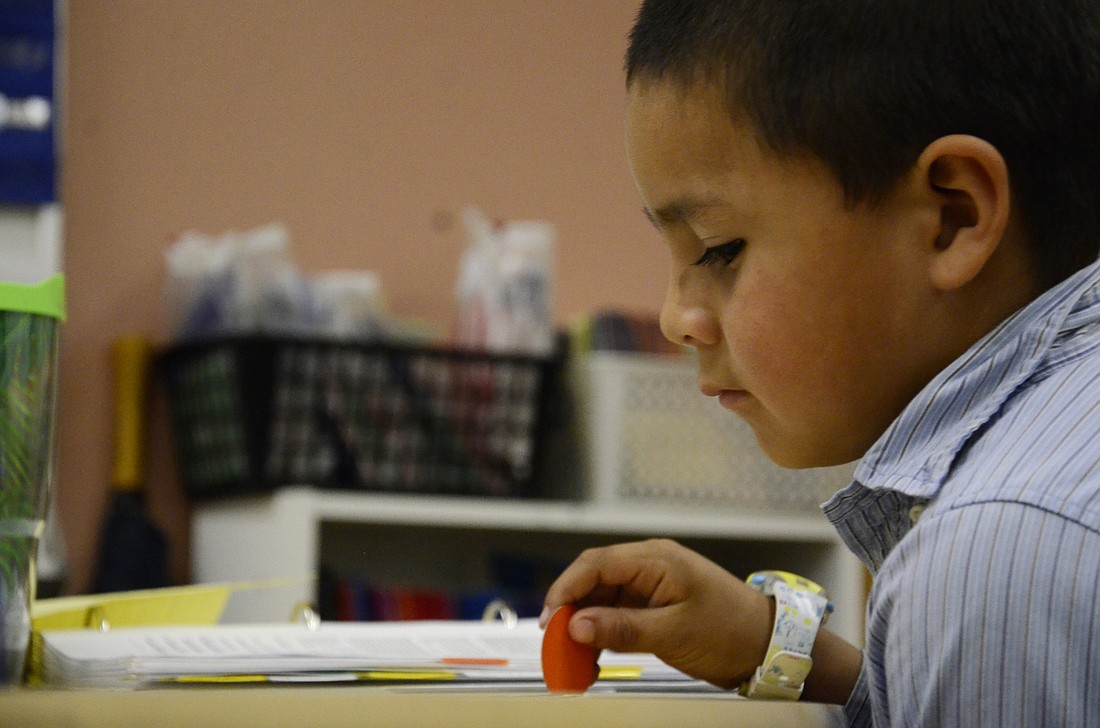- April 25, 2024
-
-
Loading

Loading

Growing up, Roy Garza attended 13 elementary schools in Manatee County alone.
As the child of migrant farm workers who also traveled to Michigan, Texas and Florida for the harvest seasons, his education was different than what most Americans experience.
So when he eventually used his education to take him away from farm work, Garza knew how he wanted to use his new skills.
He is now serving as a full-time liaison between migrant families and Gilbert W. McNeal Elementary School, making sure those students receive the best possible education in a challenging environment.
“The school would have a hard time operating (its migrant program) without him,” said Kate Bloomquist, the Manatee County School District migrant coordinator.
While many of East County’s elementary schools have migrant students enrolled, including B.D. Gullett and Gene Witt, McNeal is the highest, with 78 migrant students in the 2015-2016 school year.
Migrant students present a number of issues, and McNeal has tried to bridge the learning gap.
Garza is just one of the school’s assets. While other schools have a part-time liaison, McNeal has retained Garza fulltime to assist the school in coordinating and communicating with migrant families.
“It helps because I’ve been in that situation,” he said. “Students can trust and respect me because I’ve lived that life.”
His duties are many, and varied. Sometimes Garza serves merely as a translator for parents, whether helping them with paperwork from the district or helping them understand school meetings. During class, Garza works with the students to help them grasp concepts and ideas in a language that may not be their first.
He also makes home visits and helps parents assist their children do school work. He talks to them about their questions and concerns.
“The parents have a true care, that they want their kids to succeed,” he said.
He knows that the road to success is not easy for these children. By the age of 12, he was working after school to help his parents, sometimes toiling until 10 p.m. before doing his homework. If he couldn’t get it done that night, he would wake up early to do it before catching the bus.
As his parents followed the harvest seasons, the family would travel north in the summer and south in the colder months.
“It wasn’t a normal childhood life,” he said. “I had to focus on work, not playing outside.”
The course of Garza’s future changed during his years at Lakewood Ranch High School. There, the migrant student liaison, Lorraine Battista, motivated him to finish high school and pursue a career outside of agriculture.
Battista made a difference in his life, and Garza wanted to do the same for others.
He is making that difference at a school that recognizes the need. Besides Garza, McNeal has a classroom dedicated to students whose first language is not English, whether or not they are migrant students.
Kelly Smart is the lead teacher in the English as a Second Language (ESOL) lab, which was incorporated into the school nine years ago. Throughout the day, students from different grade levels spend time in her classroom to practice reading, writing and understanding English. Not all of the students are migrant students, and not all migrants students are in ESOL.
Smart has been teaching for 37 years, and has been at the head of the program at McNeal since its birth. She assesses each student, because some may have already begun learning English while others may not speak any at all.
Many of the migrant students arrive a few weeks after the fall semester begins, September or early October, depending on the harvest season in the northern United States. Because of their shortened semester, schools have to juggle with a learning curve, usually with an assist by the students’ previous schools in other areas of the country.
After students arrive at McNeal, they typically stay in the area until July. After school ends for the greater student body, McNeal offers a summer school for migrant students. Those programs are held with coordination in Myakka City through the East Coast Migrant Head Start program.
The Head Start program provides early learning services to qualifying migrant families, those who get more than 51% of their household income from agricultural work. Head Start works with families and children from birth to 5 years of age.
The Head Start center gives McNeal two classrooms to use for migrant student programs, including summer school, school year credit recovery for high school students and a twice-a-week arts enrichment program for elementary migrant students.
“There is a benefit to having that partnership,” said Daniel Jaime, the interim East Coast Migrant Head Start center director at Myakka City. “The transition is a lot easier.”
Idalberta Aquino has been working at Faulkner Farms since 2003. She has four sons, including three older children who went through McNeal and her youngest, Noel Lopez, who is currently in third grade.
“I’m proud of the fact they are getting an education here,” she said with Garza interpreting. “They are learning the American culture and the opportunities are greater.”